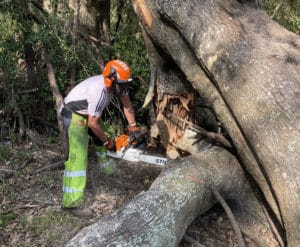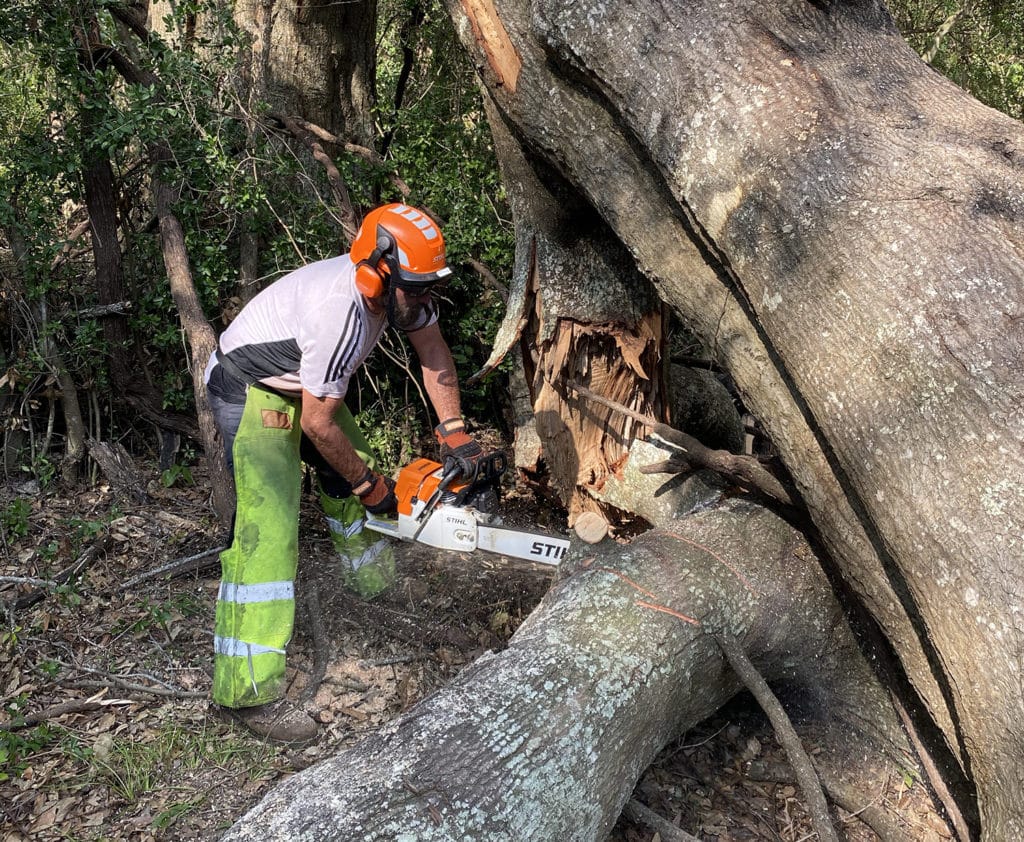
NASHVILLE (BP) – COVID-19 wasn’t the only influence on Southern Baptist Disaster Relief preparedness across state conventions last year, but it was a big one.
With a coronavirus that disproportionately affected older adults, Southern Baptists’ most visible ministry in times of crisis experienced a shortage of available workers in 2020. In addition, storm survivors were sometimes hesitant to receive help that may require closer contact with other people. And many churches realized the need to develop their own crisis response plan and teams.
But with COVID cases declining and vaccinations rising, state Disaster Relief leaders say volunteers are returning, with more in tow.
That’s good, because weather often brings the need for a crisis response. The 2020 hurricane season proved to be one of the most active ever, producing 30 named storms, 12 of which made landfall. It started with Hanna in July and continued through the fall – when two storms hit the Lake Charles, La., area six weeks apart.
Last week, Mississippi and other areas of the South emerged relatively unscathed after a “high risk” warning of a significant weather event. While 49 tornadoes were reported across 10 states, no confirmed fatalities came as a result of those storms where the strongest tornado reported was an EF2.
Mississippi Baptist Disaster Relief Director Hubert Yates said even before that event, the emphasis had begun to be placed on churches taking the lead in efforts.
“We’re pushing on that concept that the North American Mission Board and Southern Baptist Disaster Relief have [advocated] for years,” he said. “We’re working to equip the local church for a disaster relief response. In a rural environment it can be easier for churches to band together and do the work. It encourages them to become disaster-ready.”
That approach mirrors the one taken by the Kansas-Nebraska Convention of Southern Baptists (KNCSB). The reason, explained state director Frank McCrary, had more to to with geography.
“We used to do more statewide training, but the distance was so great that we decided to put it at the associational level,” McCrary said. “More churches are also wanting to be involved in Ready Church. It’s a grass-roots movement, so people are excited about being able to help in their hometowns.”
Ready Church is an initiative to help congregations prepare for local deployment in a crisis. Other state conventions making use of it include Kentucky and Virginia.
A severe 2016 wind storm in North Platte, Neb., thrust Calvary Baptist Church into the role of emergency provider, McCrary said.
“There was a lot of damage so the pastor, Ryan Alexander, went to the emergency manager and offered help. They couldn’t talk to him at that moment and gave him a phone number to call that turned out to be the electric company. Ryan found out they needed help with downed trees, and the church ended up clearing most of the work orders.
“The church became known throughout the city with all the free press. Ryan was interviewed and the newspaper took a picture of him while he was preaching.”
Since then, McCrary added, Calvary has been the example in a church preparing to respond to local emergencies.
Coy Webb, Send Relief Crisis Response director, which includes Southern Baptist Disaster Relief, agreed that while his group offers support from a national perspective, states are positioned to do the heavy lifting.
“They do such a great job,” he said, referring to training at the state and associational levels. Early 2020 wasn’t nearly as active as other years, he said. Of course, that became even more so the case early during the shutdown.
“That changed during the hurricane season,” he said. “We were able to respond in more of a normal fashion and get volunteers out. We were concerned because a lot of them are over 60 and we didn’t know how they would respond, but we were amazed. They got out there [and] provided the help typical of the past, whether it was chainsaw work, roof tarping, chaplaincy or anything else.”
That said, each leader said COVID has brought an increased respect for those wanting more personal space as well as other steps such as wearing masks.
Disaster Relief training takes place on the state level through Oklahoma Baptists and the Southern Baptists of Texas Convention (SBTC). However, churches still determine what type of response approach works best for them.
SBTC Disaster Relief consists of 92 units and approximately 6,000 volunteers. SBTC DR Director Scottie Stice said the majority of the units were individual churches, though some were through associations. He said the SBTC Disaster Relief Task Force operates in a supporting role as an incident management team in the field, but flexibility is a must.
“We have responsibility in several areas like communications, chainsaw teams and chaplaincy.” Stice said. “But there are also times where a local unit may be there and we provide support from that point.”
Last year SBTC DR introduced online options, which kept their total training numbers on par with years past. Upcoming introduction sessions begin in April in Amarillo. Those and some other Phase I courses will also be offered online, Stice said. Chainsaw schools and unit leader training, which will take place later in the year, will be in-person only.
Training, background checks and credentialing team members are some of the tasks performed at the state level, said Oklahoma Disaster Relief Director Don Williams. Additional steps are taken to better prepare churches for their individual response.
“We’re a lot less centralized than we used to be,” he said. “Over the last year we’ve encouraged and supported churches who were doing things like feeding local children who weren’t able to get those meals at school. We couldn’t do that at the state level, so we sent out some grant money to help meet that need.”
Training sessions will wrap up April 6 at First Baptist in Duncan, Okla., in preparation for the stormy season.
COVID dictated changes in some disaster relief protocols, Williams said. After an ice storm last year, for instance, seven separate feeding sites were established instead of one so people could spread out. In addition, Disaster Relief operations practically shut down for six months amid COVID, as most of its members are older and more vulnerable to the virus.
That has changed, though.
“Turnout for the trainings we’ve held this year has been better than expected,” he said. “We’ve trained around 150 so far, with 100 of those being new. There are also a lot of younger folks. Our BCMs (Baptist Collegiate Ministries) have been bringing students to those training sessions. People were also coming up to me and saying they had received their vaccine shot and were ready to go.”
Editor’s Note: This article first appeared on Baptist Press.
Published March 24, 2021
